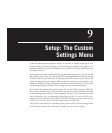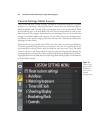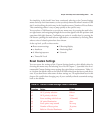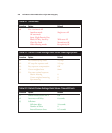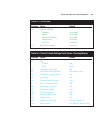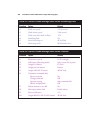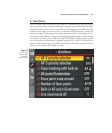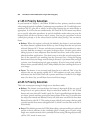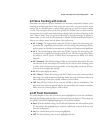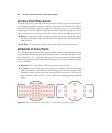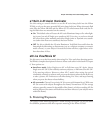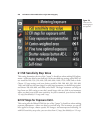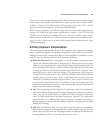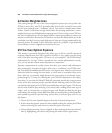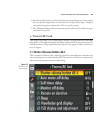a1 AF-C Priority Selection
As you learned in Chapter 5, the Nikon D7000 has three primary autofocus modes
when using the optical viewfinder: Continuous-servo autofocus (AF-C) and Single-servo
autofocus (AF-S)—plus AF-A, which, in effect, flips between the two main modes as
appropriate. (Live View has two similar modes, AF-S and AF-F.) This menu entry allows
you to specify what takes precedence in optical viewfinder modes when you press the
shutter release all the way down to take a picture. You can give precedence to focus
(called focus priority) or to the release button (called release priority). You can choose
from:
■ Release. When this option is selected (the default), the shutter is activated when
the release button is pushed down all the way, even if sharp focus has not yet been
achieved. Because AF-C focuses and refocuses constantly when autofocus is active,
you may find that an image is not quite in sharpest focus. Use this option when
taking a picture is more important than absolute best focus, such as fast action or
photojournalism applications. (You don’t want to miss that record-setting home
run, or the protestor’s pie smashing into the Governor’s face.) Using this setting
doesn’t mean that your image won’t be sharply focused; it just means that you’ll get
a picture even if autofocusing isn’t quite complete. If you’ve been poised with the
shutter release pressed halfway, the D7000 probably has been tracking the focus of
your image.
■ Focus. The shutter is not activated until sharp focus is achieved. This is best for
subjects that are not moving rapidly. AF-C will continue to track your subjects’
movement, but the D7000 won’t take a picture until focus is locked in. You might
miss a few shots, but you will have fewer out-of-focus images.
a2 AF-S Priority Selection
This is the counterpart setting for Single-servo Autofocus mode.
■ Release. The shutter is activated when the button is depressed all the way, even if
sharp focus is not quite achieved. Keep in mind that, unlike AF-C, the D7000
focuses only once when AF-S mode is used. So, if you’ve partially depressed the shut-
ter release, paused, and then pressed the button down all the way, it’s possible that
the subject has moved and Release Priority will yield more out-of-focus shots than
Release Priority with AF-C. This setting is most viable if you’re using a fast lens with
a speedy internal focus motor (designated AF-S, which is not the same as the AF-S
focus mode).
■ Focus. This default prevents the D7000 from taking a picture until focus is achieved
and the in-focus indicator in the viewfinder glows a steady green. If you’re using
Single-servo autofocus mode, this is probably the best setting. Moving subjects really
call for AF-C mode in most cases.
David Busch’s Nikon D7000 Guide to Digital SLR Photography282




